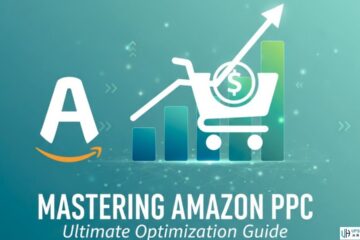Predictive Dialing vs Manual Dialing
With the progress in call center technology, there are many tools that can increase calling efficiency and reduce agent downtime. Among the most outstanding call center technologies is the predictive dialer.
A dialer is software that initiates calls to establish connections with potential clients. It is utilized for both making and receiving calls. Call center supervisors agree that dialers are essential to call center operations as they help communicate with clients. Thus, the success of a call center is dependent on the type of dialer used and its capabilities.
Let’s explore the benefits of predictive dialing over manual dialing and their main differences.
Manual Dialing
- Definition
The Manual Dialer is a simple dialing system where agents dial customer contact numbers one by one. This is the typical dialer used by small to medium-sized call centers when they first start their operations.
Using a manual dialer, agents input numbers either from a preloaded list or by typing them in with a keypad. They then have to wait for the call to connect, which may result in a busy signal, a wrong number, or an answering machine.
Manual dialing is the least efficient technique for outbound calling since it does not allow for the screening of these calls.
- Advantages
The manual dialer requires the agent to input information such as the caller’s name, call status, notes, and updates. This data, along with the call time, duration, and recording, can be stored in a database and used to test the call center’s performance.
By analyzing the agents’ logging details, call records, and idle time, the manual dialer can help track their performance charts.
- Disadvantages
Although manual dialing may seem simple enough for a new call center, it is actually the least efficient method compared to others.
Agents spend most of their time searching for, dialing, and redialing numbers. This is due to busy tones, incorrect numbers, and answering machines. This makes contacting clients a frustrating process resulting in a decrease in the number of connections and revenue.
Manual dialers rely on agents to operate. This can lead to inconsistent performance and inefficiencies caused by human involvement.
Call centers must trust their agents to make productive calls. Yet, this reliance on human labor also results in higher staffing and training costs. A manually entered data is prone to duplication and errors.
- Applications
Despite the drawbacks, manual dialers remain the top choice for call centers that are starting out, have a tight budget, and limited knowledge. These dialers are used by those who are already using them and cannot afford more advanced ones. They are also utilized in call centers with very low call volume.
Predictive Dialing
- Definition
What is predictive dialing? A predictive dialing system is an automated dialer that initiates phone calls before agents are free to take them. Its purpose is to enhance effectiveness by contacting as many potential customers as possible.
The system moves on to the next customer if a call goes unanswered. If a call is answered, it is directed to the next available agent. This ensures that more time is spent on calls, resulting in increased productivity for the call center.
- Advantages
This method decreases the time agents spend waiting between dialing and connecting with a customer who is ready to speak. It screens out busy signals, incorrect numbers, calls waiting, and voicemail.
The main benefit of a predictive dialer is that it connects an agent with a live individual.
A predictive dialer is more effective than a manual dialer in two main ways. It increases the number of live connections and the amount of time spent on calls. It reduces the waiting time for agents by dialing the next number and filtering out unsuccessful calls.
A predictive dialer makes more calls and reduces the amount of time agents spend waiting. Call centers can also take advantage of time-zone calling through predictive dialing.
The effectiveness of a predictive dialer depends on its ability to balance the number of available agents with the number of outbound calls made. The pacing algorithm predicts the optimal number of calls to make based on agent availability.
The algorithm is adaptable, increasing the number of calls made when more agents are available. It only decreases when fewer agents are available to allow busy agents to finish their calls.
- Disadvantages
Predictive dialers have drawbacks as well. There is a delay of 2-3 seconds before an agent speaks to the customer. This is due to the time it takes for the dialer to recognize human speech and connect the call to an available agent. This delay can cause frustration for customers who have to wait to speak to someone.
Additionally, there may be instances where many calls are connected to a live customer, but no agent is available to answer them, resulting in dropped or abandoned calls.
- Application
Predictive dialers screen calls before connecting them to a live agent. But, there is still a possibility of calls being disconnected. In the US, call drop is against the law, and there is a penalty for dropped calls exceeding 3%. Thus, predictive dialers are best suited for call centers with a larger number of agents.
Predictive dialers can generate more calls than manual dialers, resulting in increased sales. As a result, it is ideal for debt collection, market research, and telemarketing companies with more than five agents.
Conclusion
The use of predictive dialing enables companies to increase their sales. It helps them make more calls and provides flexible call handling. It offers improved dialing assistance in a cloud-hosted environment and allows for easier integration with CRM applications. This results in better lead management and reporting.
In simple terms, a predictive dialer that operates through the cloud automates the process of dialing. It utilizes call metrics, analytics, and reports. This is to enhance the rate of dialing and efficiency of outbound call centers.
Call centers can track performance and gain insights for greater profits. Predictive dialing enhances agent productivity. Thus, proven to be more effective than manual dialing for managing high call volumes.









